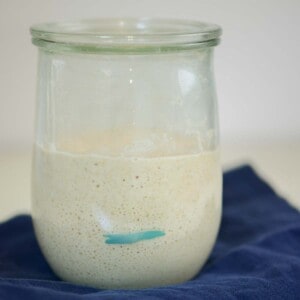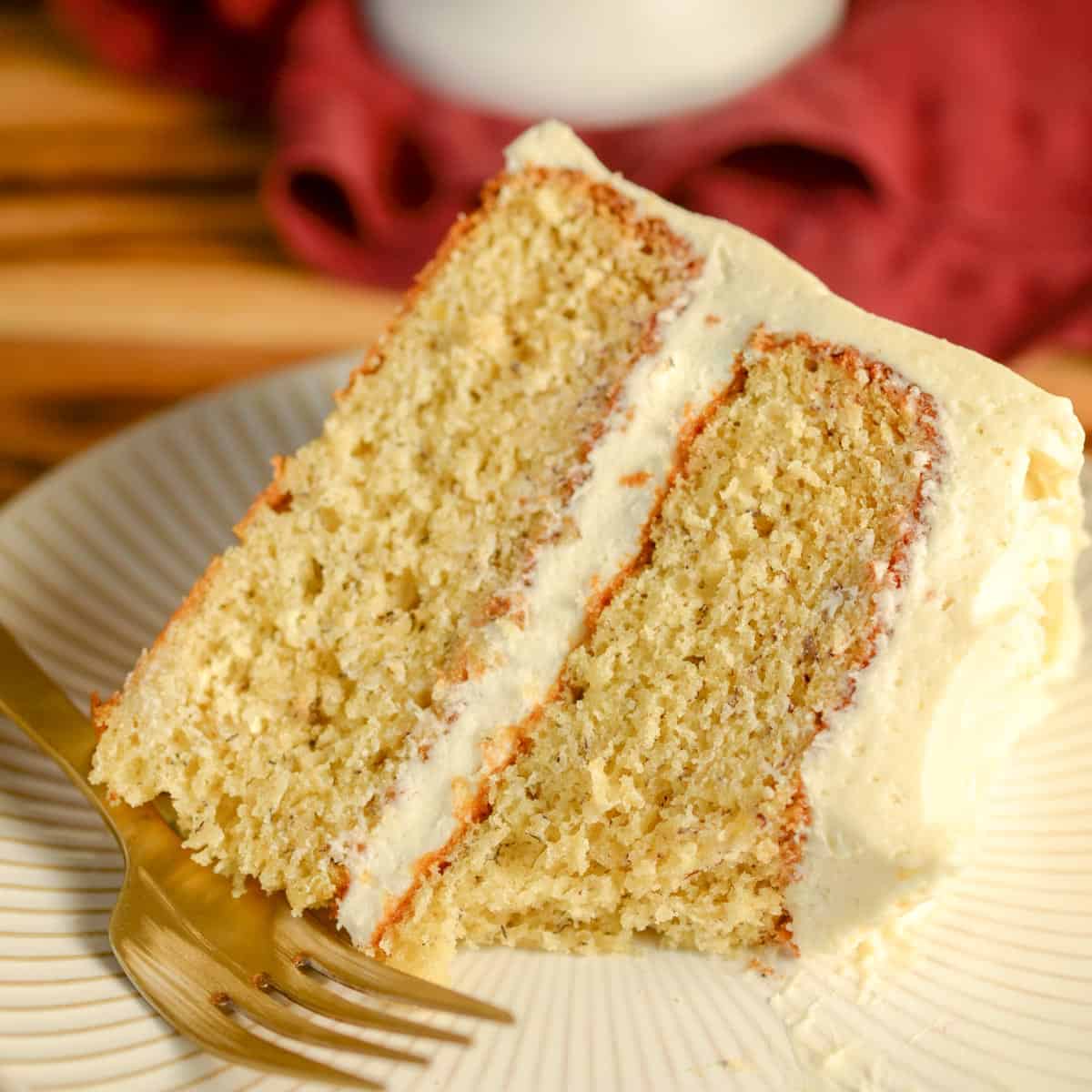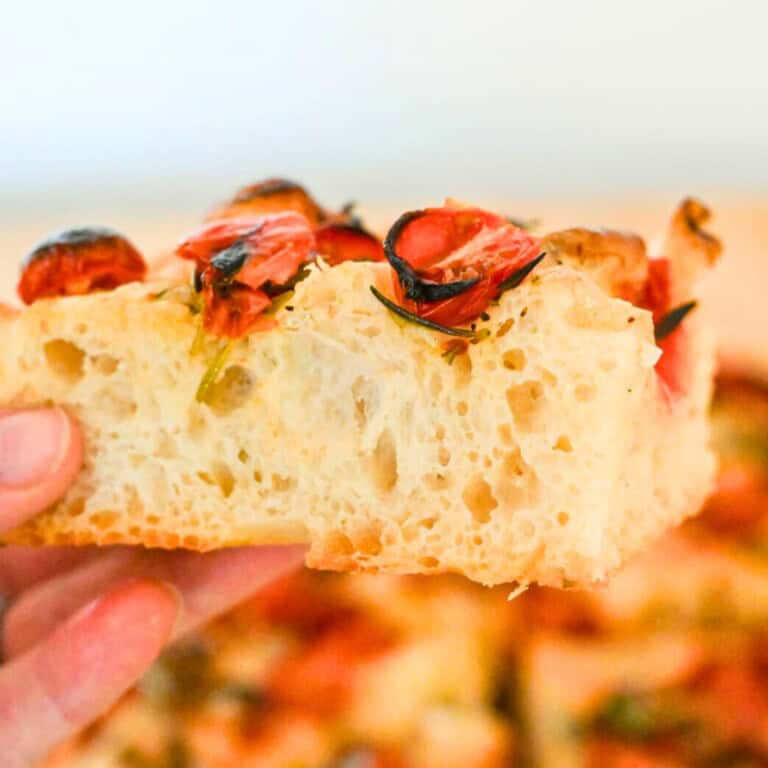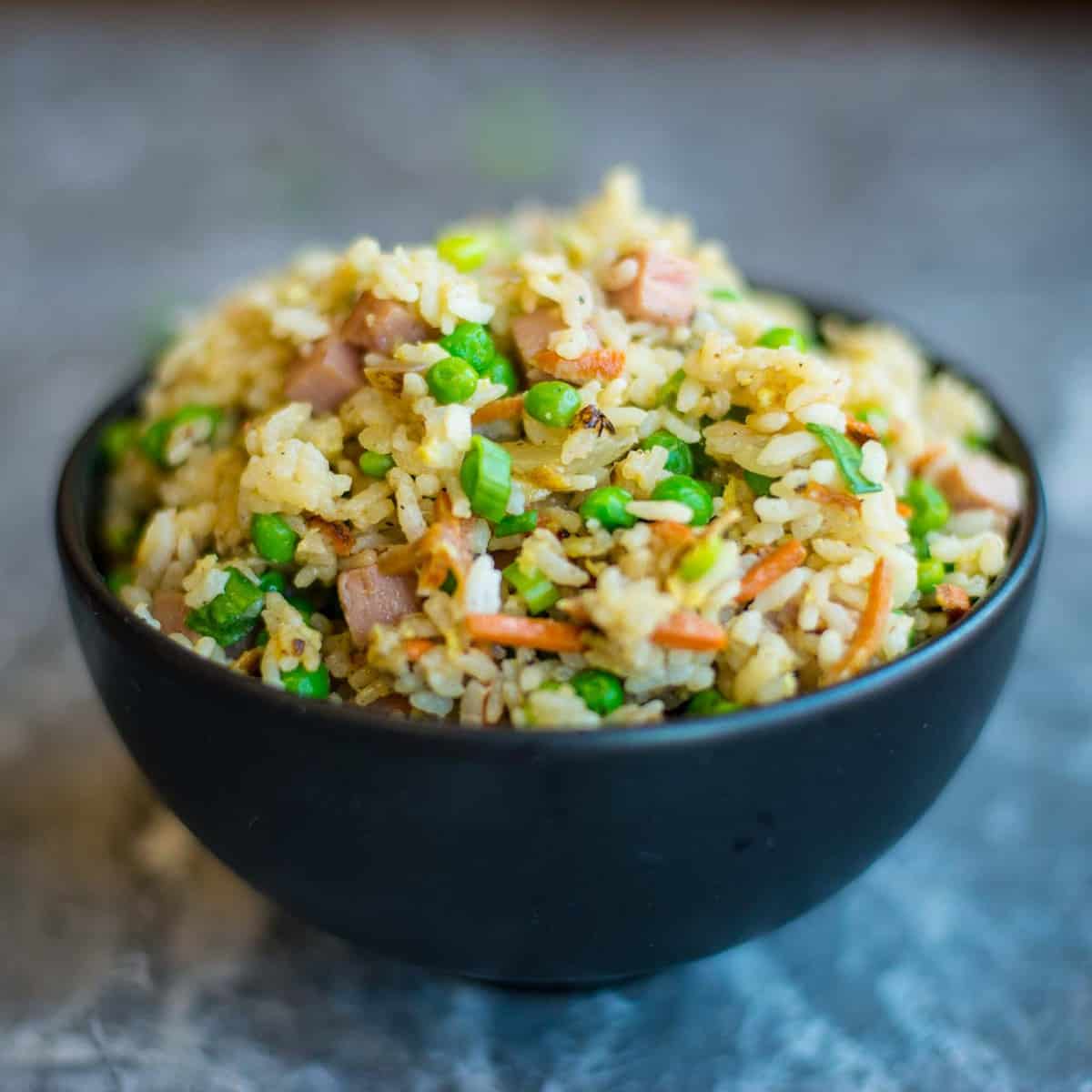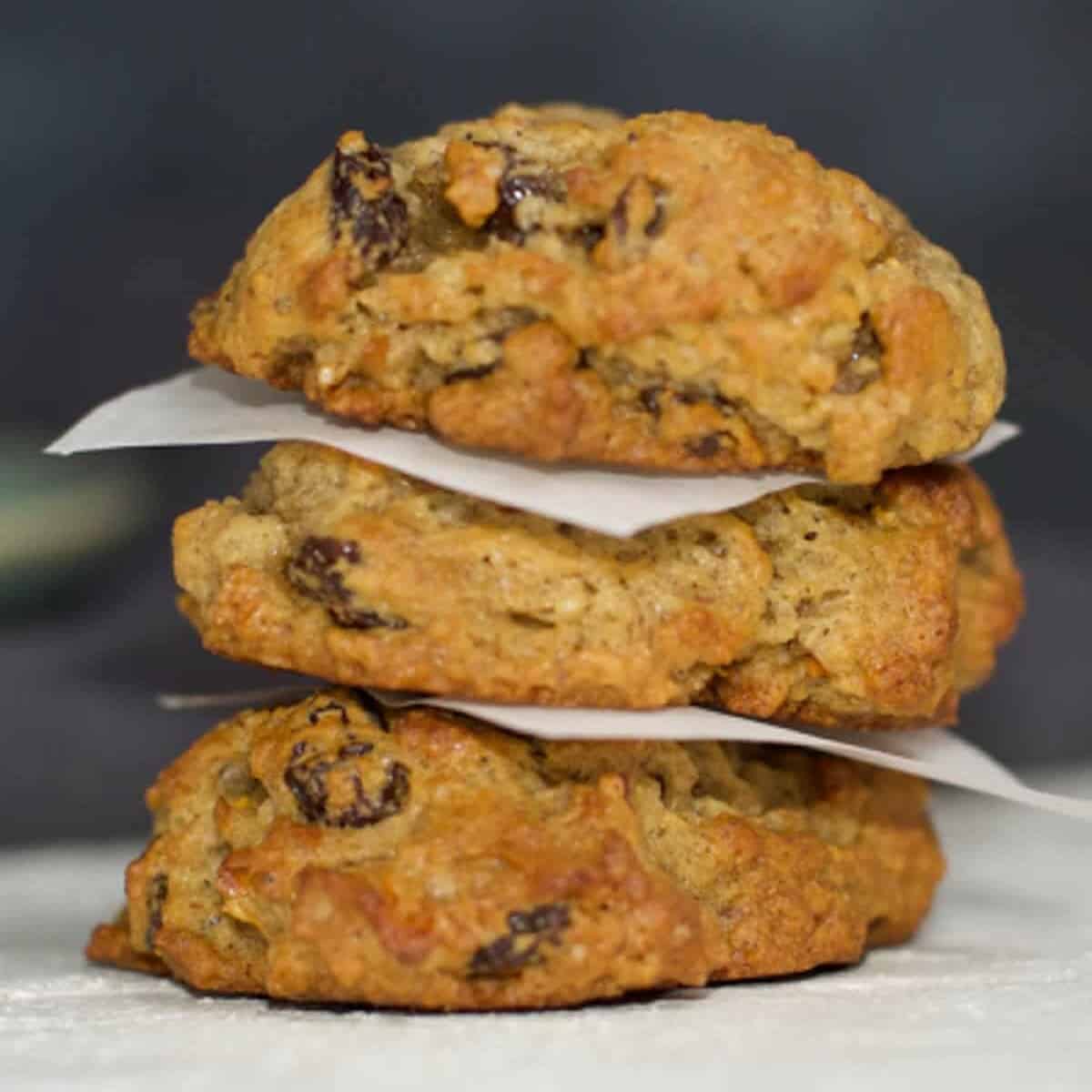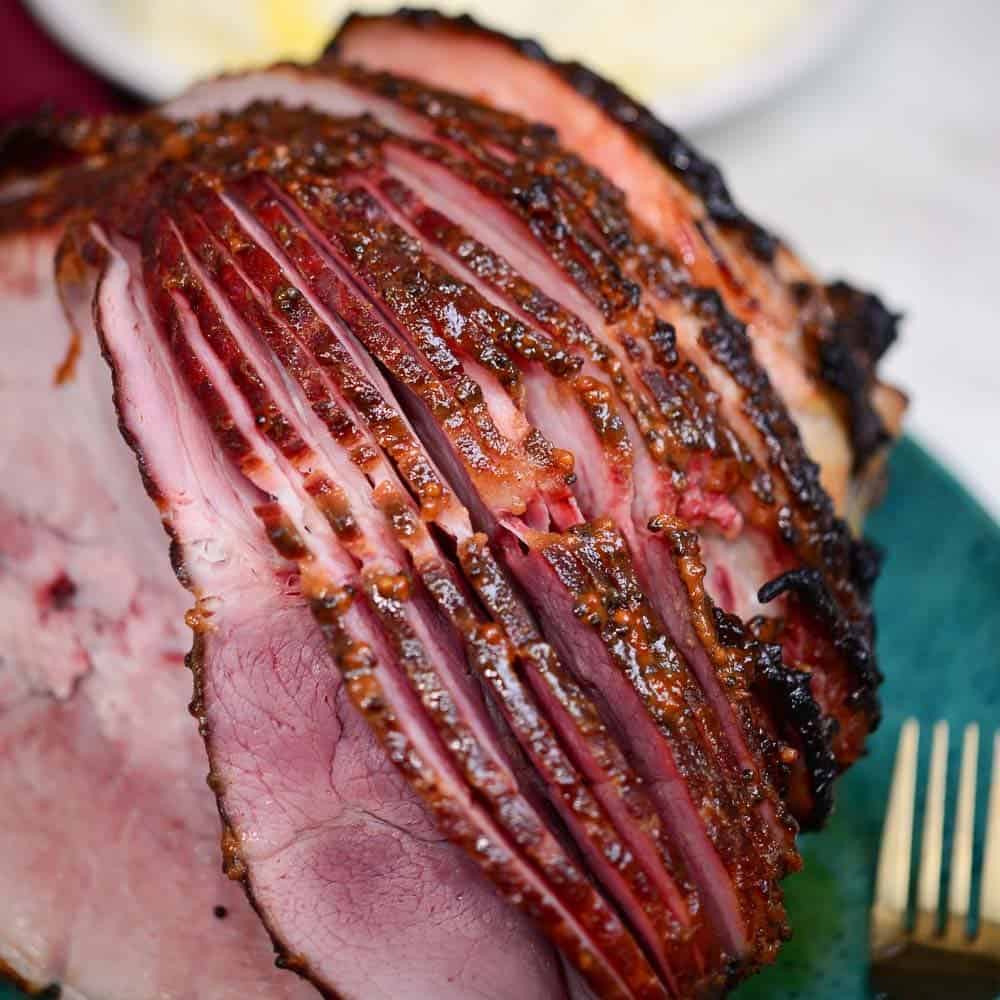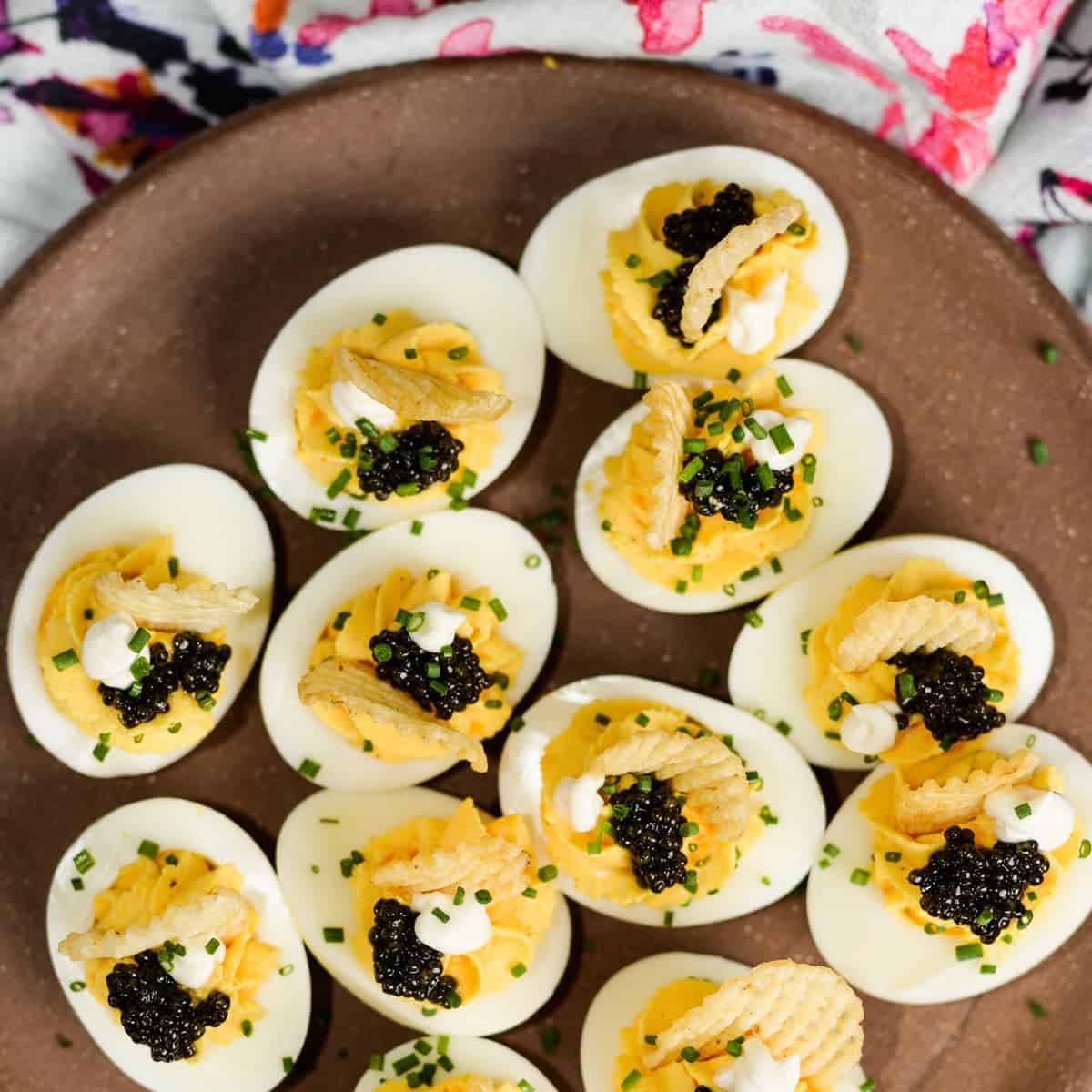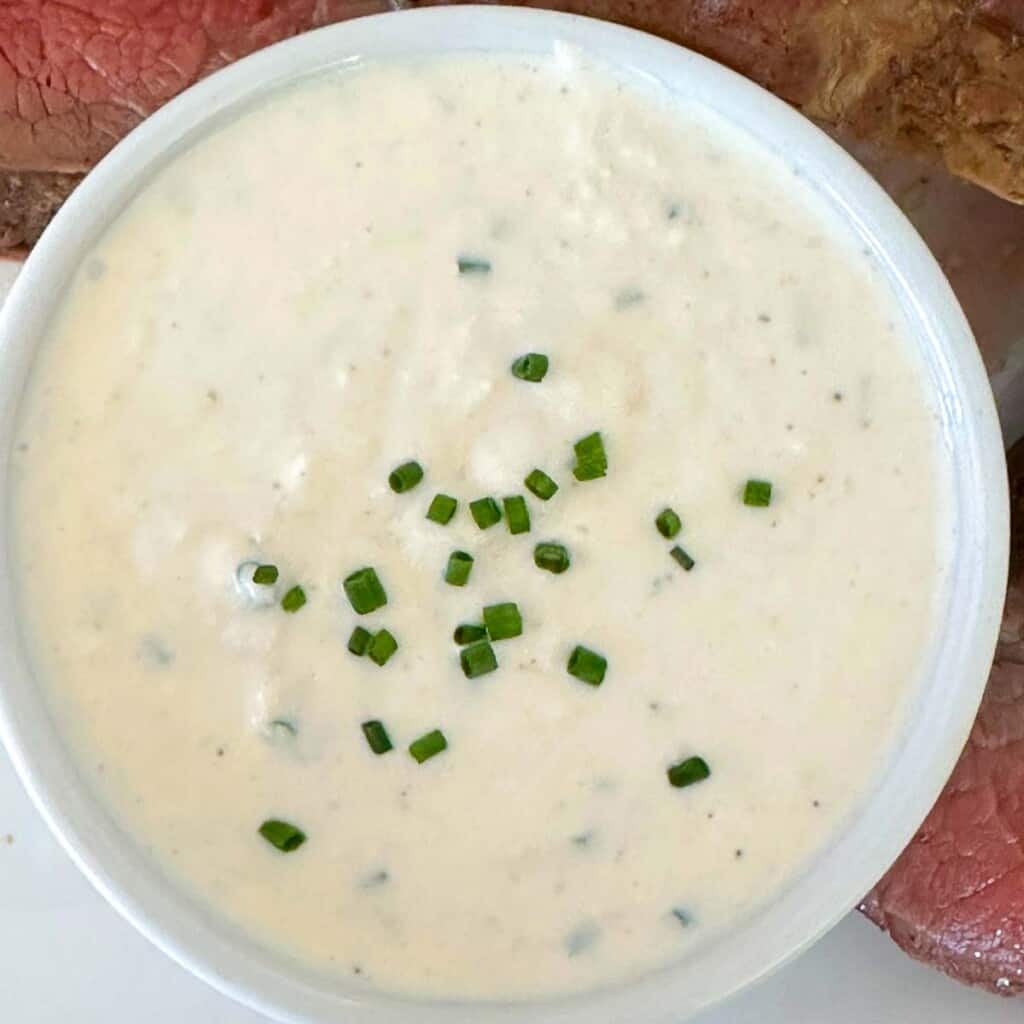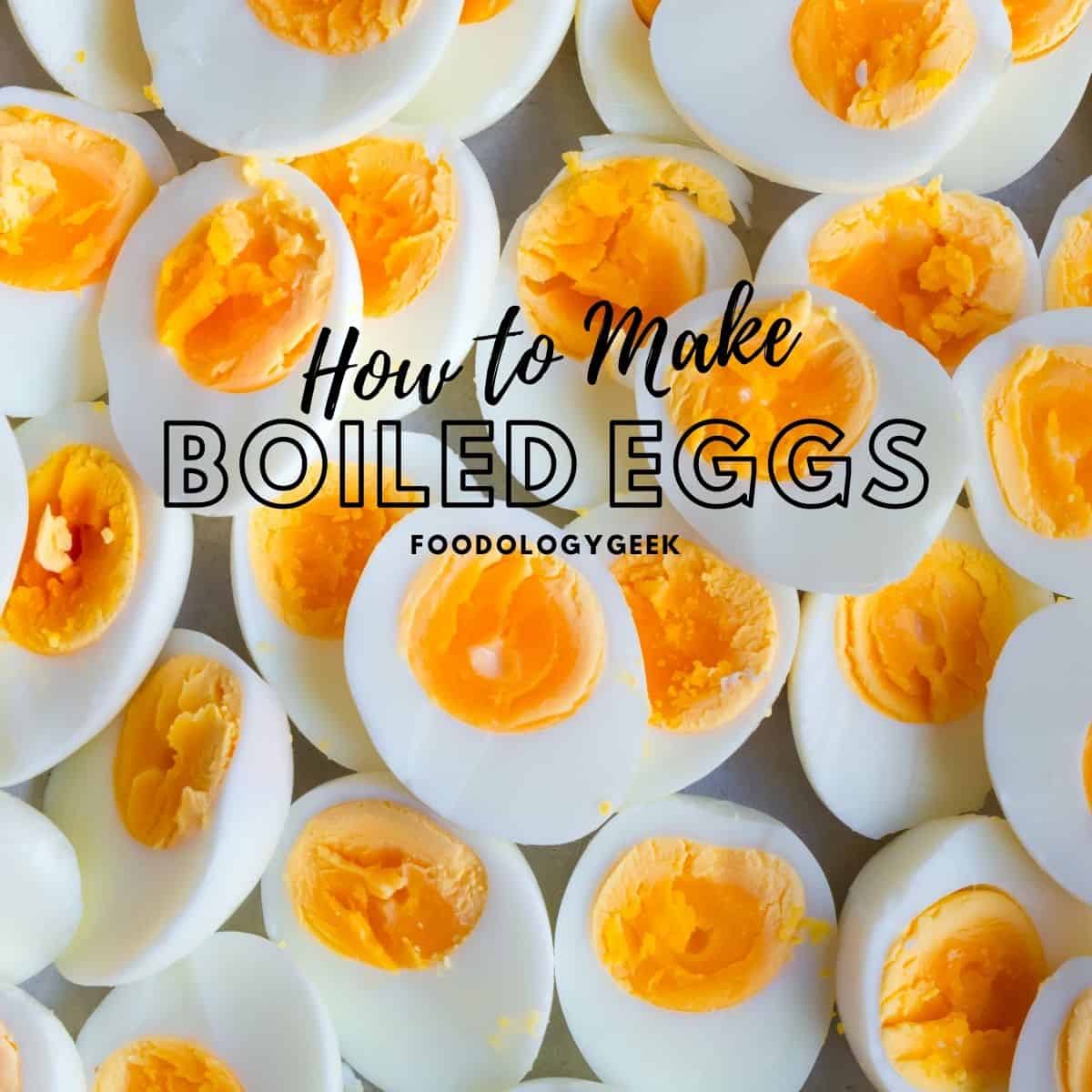Sourdough Starter Recipe
A sourdough starter is a fermented mixture of flour and water. Learn how to make a Sourdough Starter with just a few simple ingredients. In less than a week you can start making Homemade Artisan Sourdough Bread and pizza with that authentic sourdough flavor.
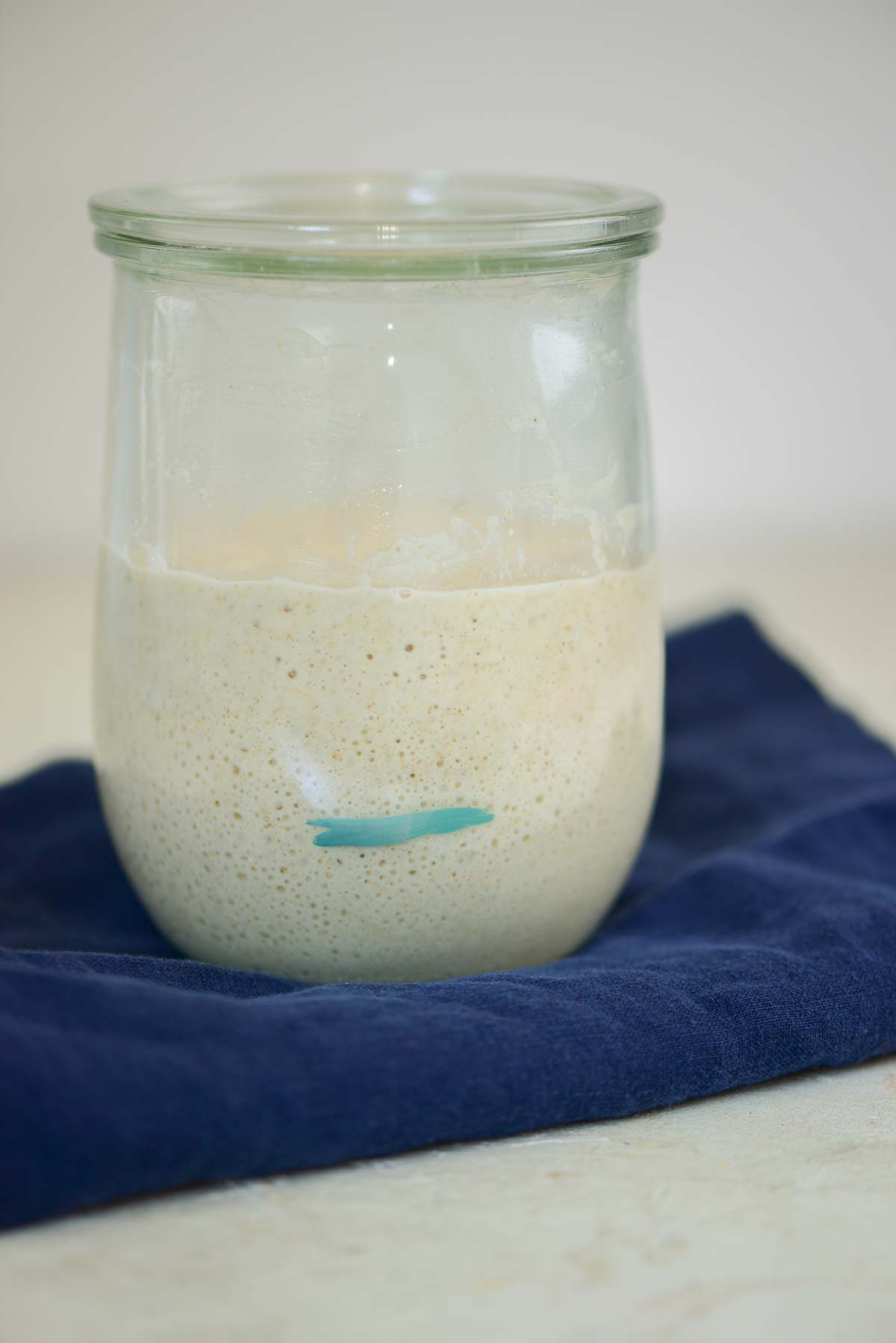
This easy sourdough starter recipe will get you on your way to baking your first loaf of sourdough bread.
If you’ve felt like the process of making homemade sourdough bread seems completely daunting? Let me take all of the guesswork out of it for you.
As a scientist, I find the entire process or making sourdough completely fascinating. I hope this post will inspire you to give the old school bread baking method a try.
I’ve been making sourdough bread for several years. I did a lot of research in the beginning to get a grasp on all of the science behind sourdough bread. That way you don’t have to.
To get started you need a healthy sourdough starter.
Why you should make your own homemade sourdough starter
- Sourdough starter is easy to make at home.
- A mature sourdough starter has incredible flavor. And the flavor only gets better with time.
- Sourdough baking is extremely rewarding and, might I even say, therapeutic.
What You’ll Need
You just need a few simple ingredients to make a new starter. The sourdough starter begins with equal parts of water and flour. You can make a starter with any kind of flour. However, I recommend starting with rye or whole wheat flour. You will also need all-purpose flour for the regular feeding of this new starter.
- Rye Flour: Rye flour is a really good flour to use when you are first making your sourdough starter. Rye flour contains proteins and nutrients that give your starter a healthy kick start. If you don’t have rye flour you can also use whole wheat flour.
- All-purpose flour: All-purpose flour is used to feed your sourdough starter. You can use bread flour as well. I actually find that all-purpose flour provides more activity in my starter than when I add bread flour to it.
- Water: I like using filtered water or bottled water for my sourdough starter. Because you will grow wild yeast, you don’t want any chlorine in the water.
GEEK OUT: If you are interested in the diffences in types of flour and why that matters check out this definitive guide on flour.
Make your first sourdough starter
A kitchen scale makes the process of making a sourdough starter much easier. The sourdough starter takes about a week to make and can be a fun science project. This is a great way to teach kids a bit of food science.
Day 1:
Find a clean jar to make your starter in. I recommend something with a large mouth. You’ll want something you can easily scoop starter out of and add back flour and water for feeding. I use a wide-mouth Weck jar.
Mix up your starter:
- 100 grams of rye flour (2/3 cup)
- 100 grams of water (1/2 cup)
- Stir this mixture together until it forms a thick paste.
- Loosely cover this mixture. You can cover the top of the vessel with a cloth secured with a rubber band.
- Set the sourdough starter out overnight in a warm place.
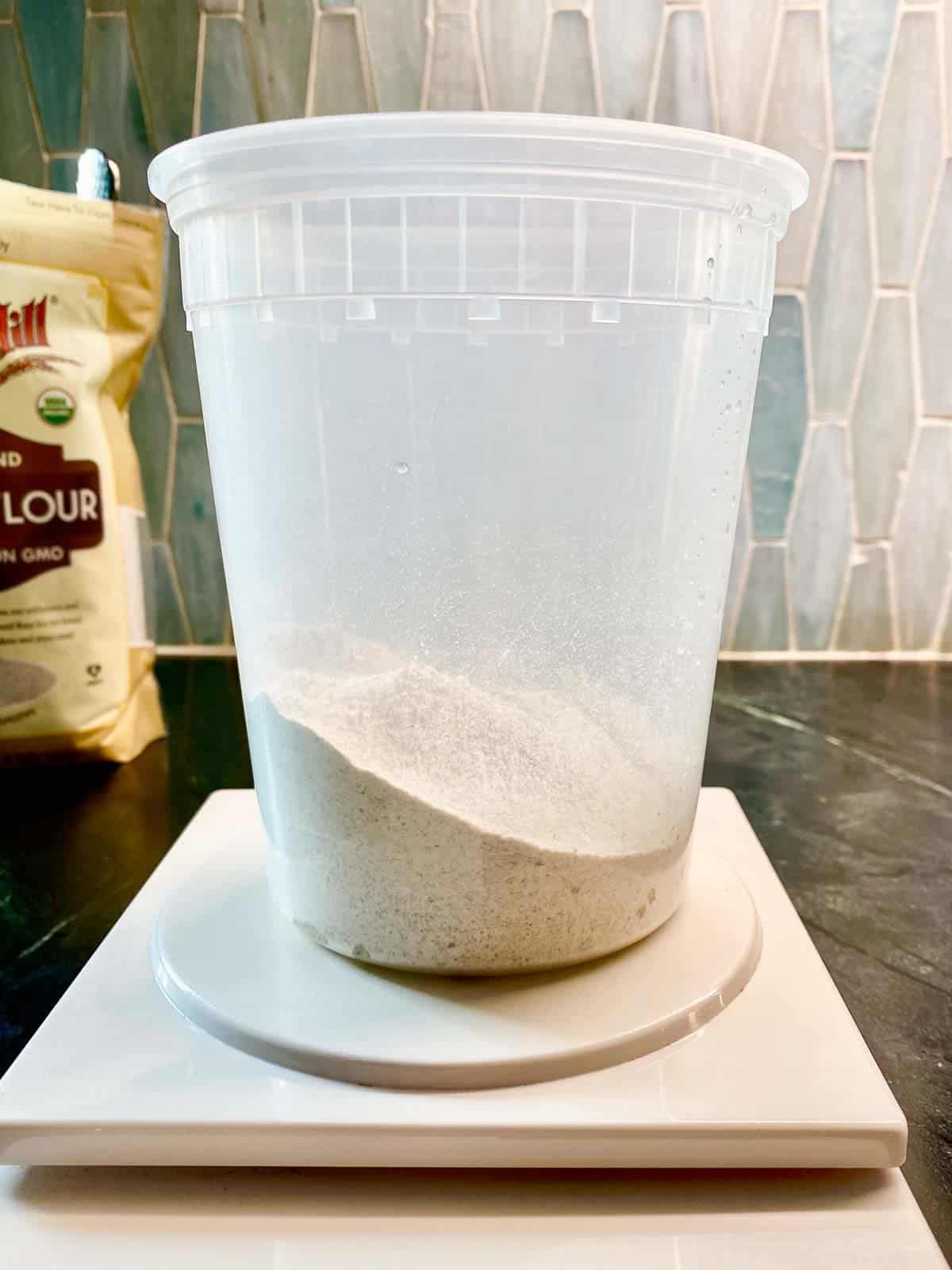
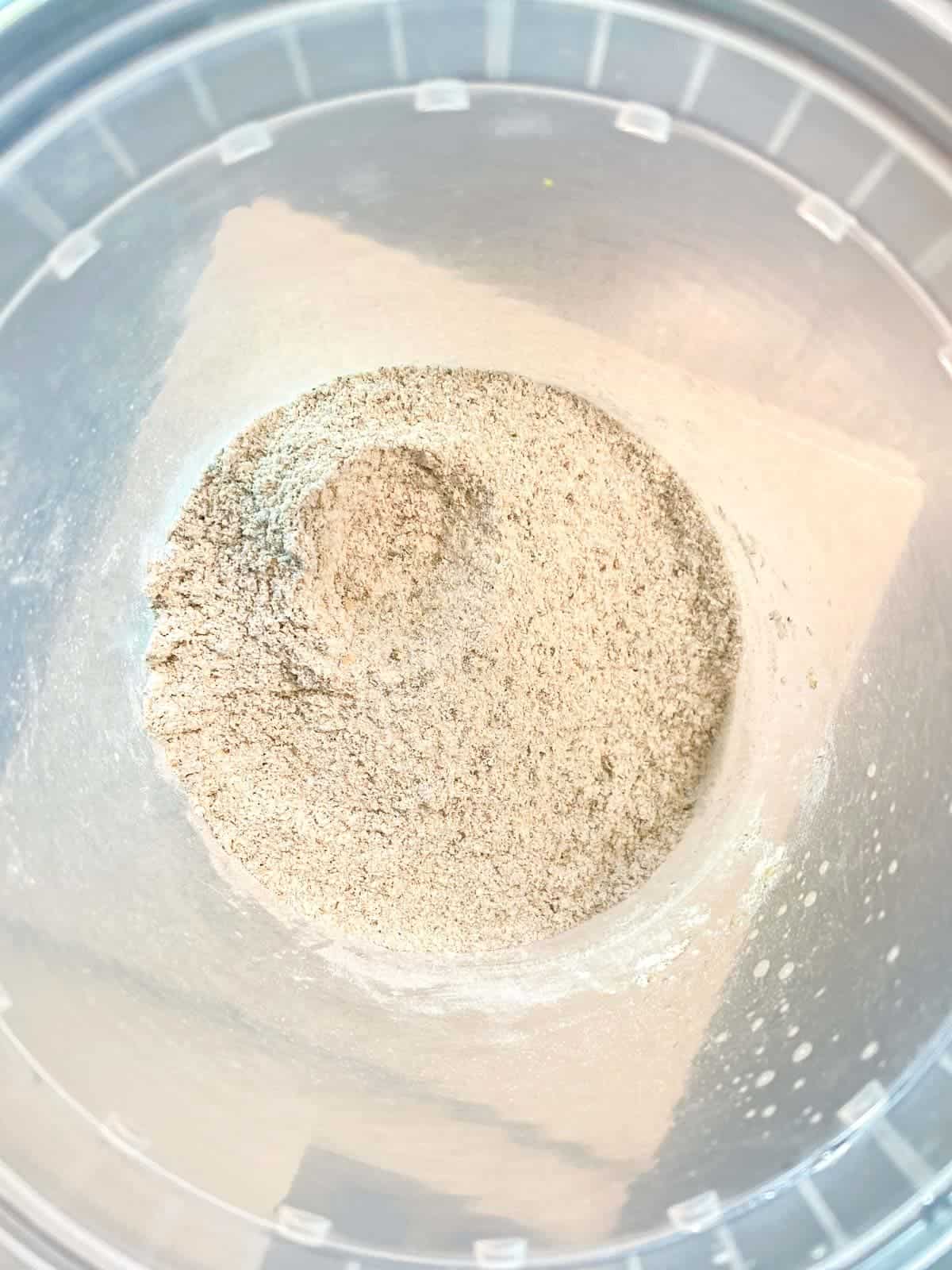
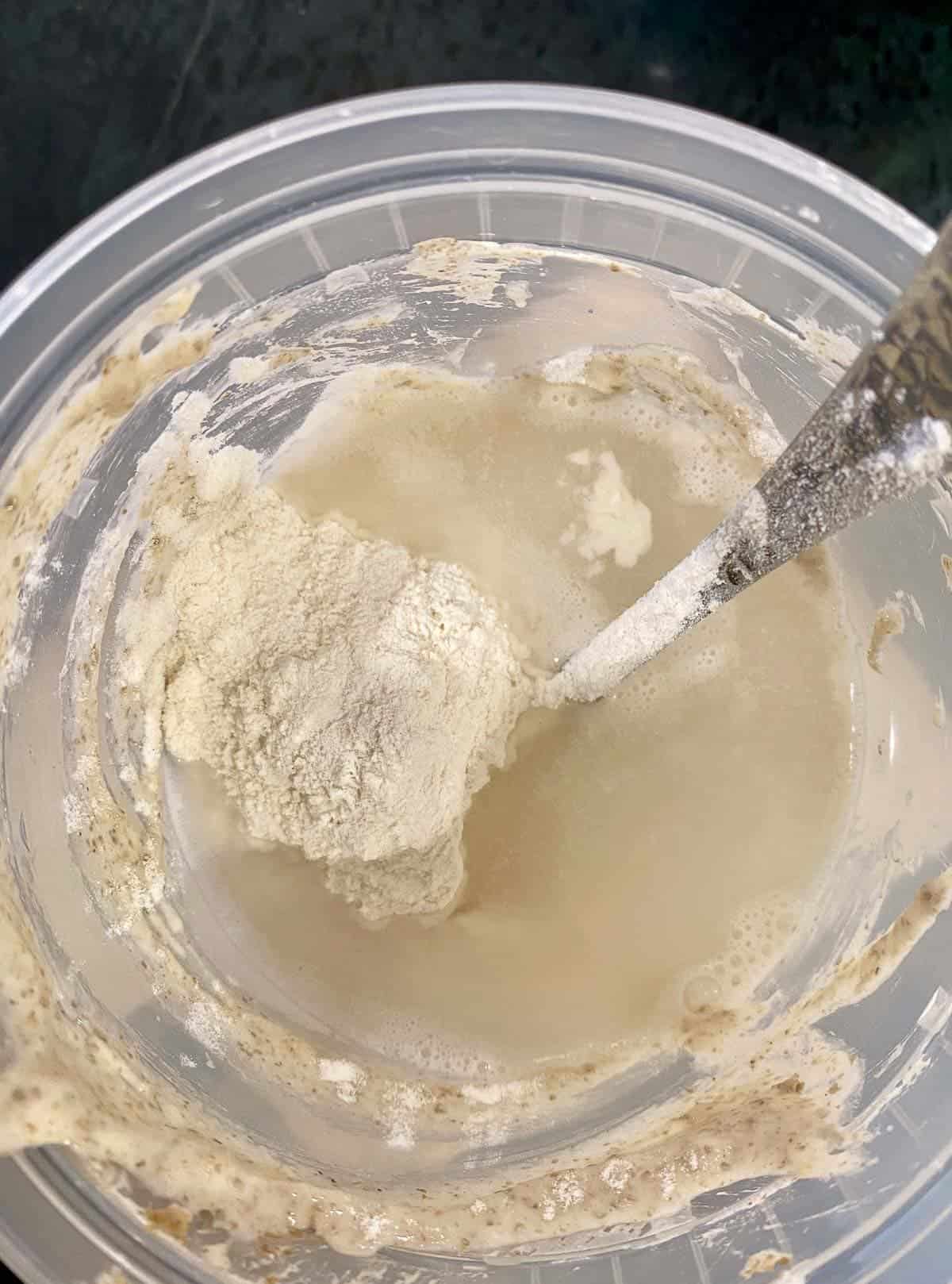
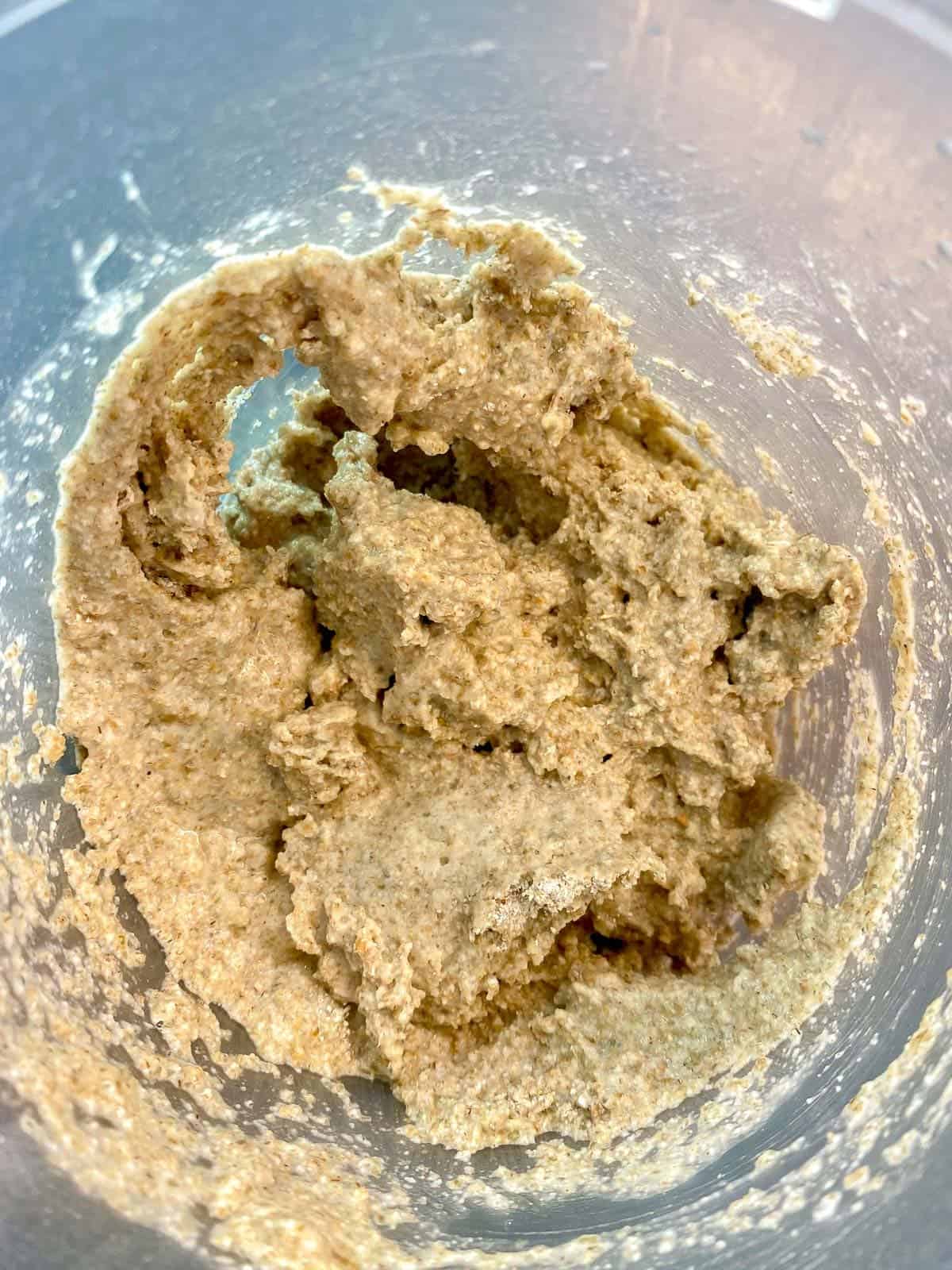
Day 2:
You may or may not see bubbles for the first couple of days. Either way. Each day remove half of the starter and discard it.
I find the easiest way to ensure you remove the correct amount of starter is to get a second dish and place it on the scale. Measure out 100 grams of starter into it. Discard this portion.
Feed your starter:
You will repeat this step every day for 6 to 7 days. Daily feeding of the sourdough starter ensures that the natural yeast stays active and healthy. You can tell that the yeast is working when you start to see bubbles in the starter.
- 100 grams of water (1/2 cup). Stir the water into the mixture.
- 100 grams of all-purpose flour (2/3 cup). Stir this mixture together until it forms a thick paste.
- Loosely cover this mixture and set it out at room temperature overnight.
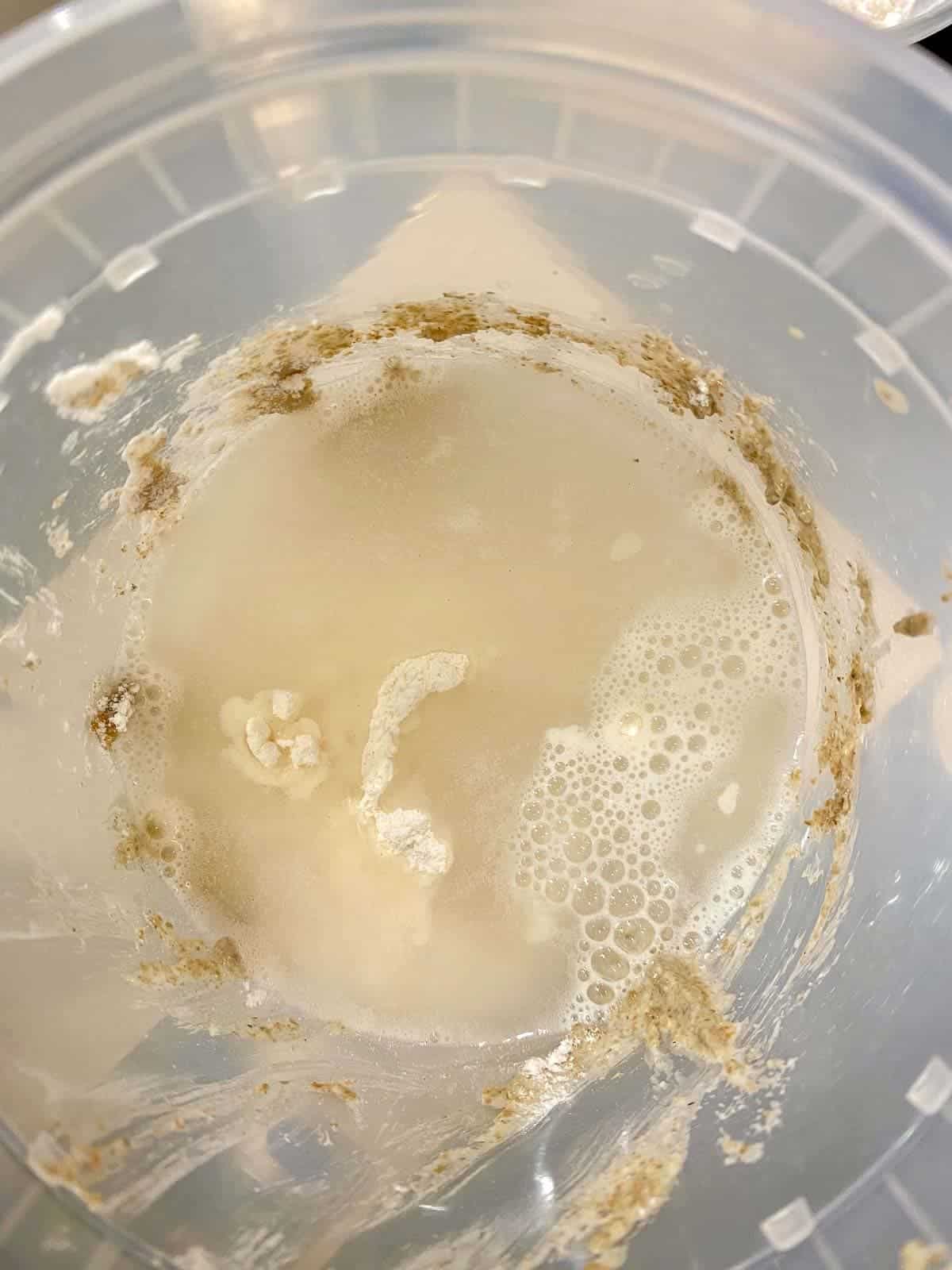
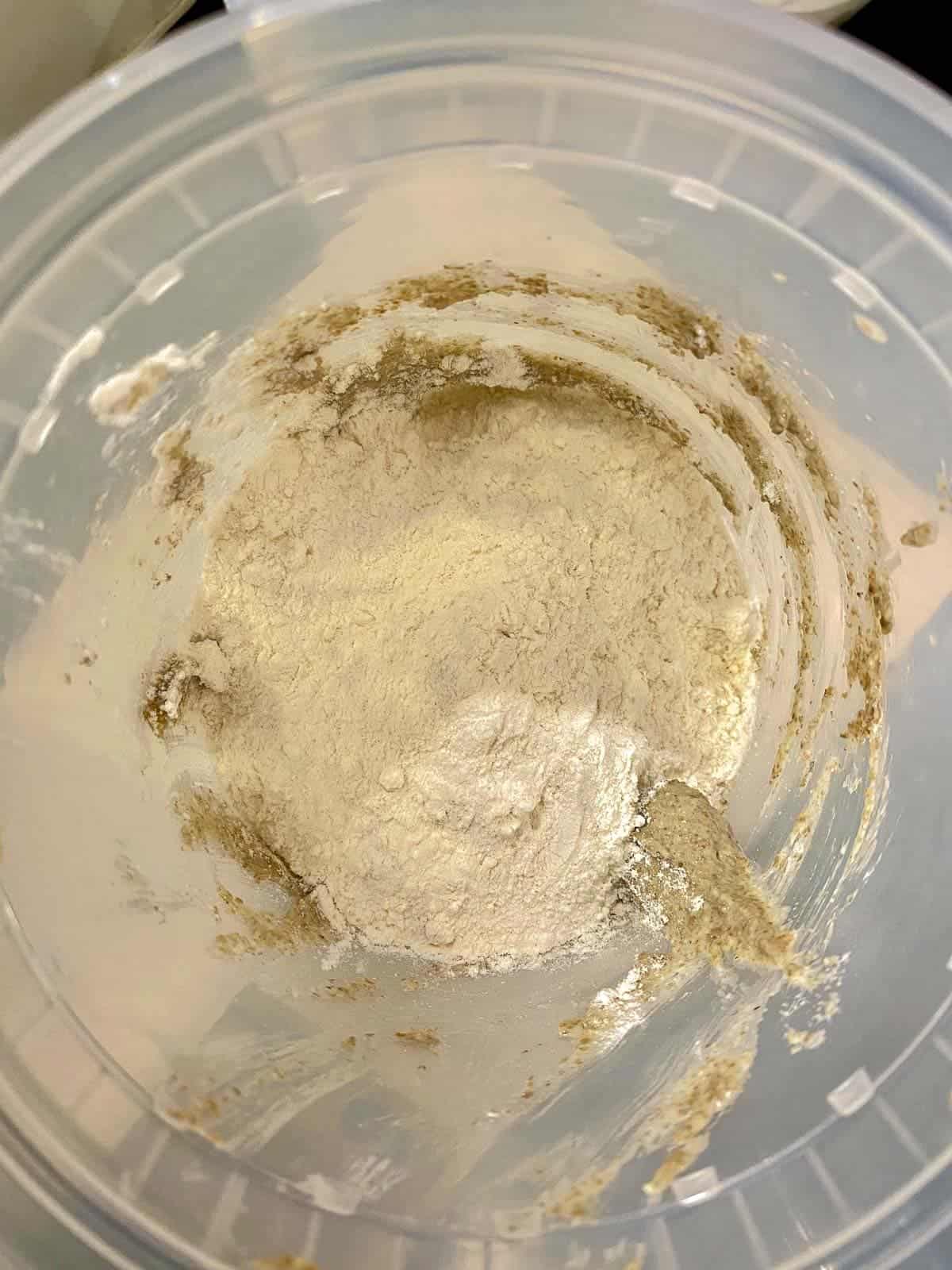
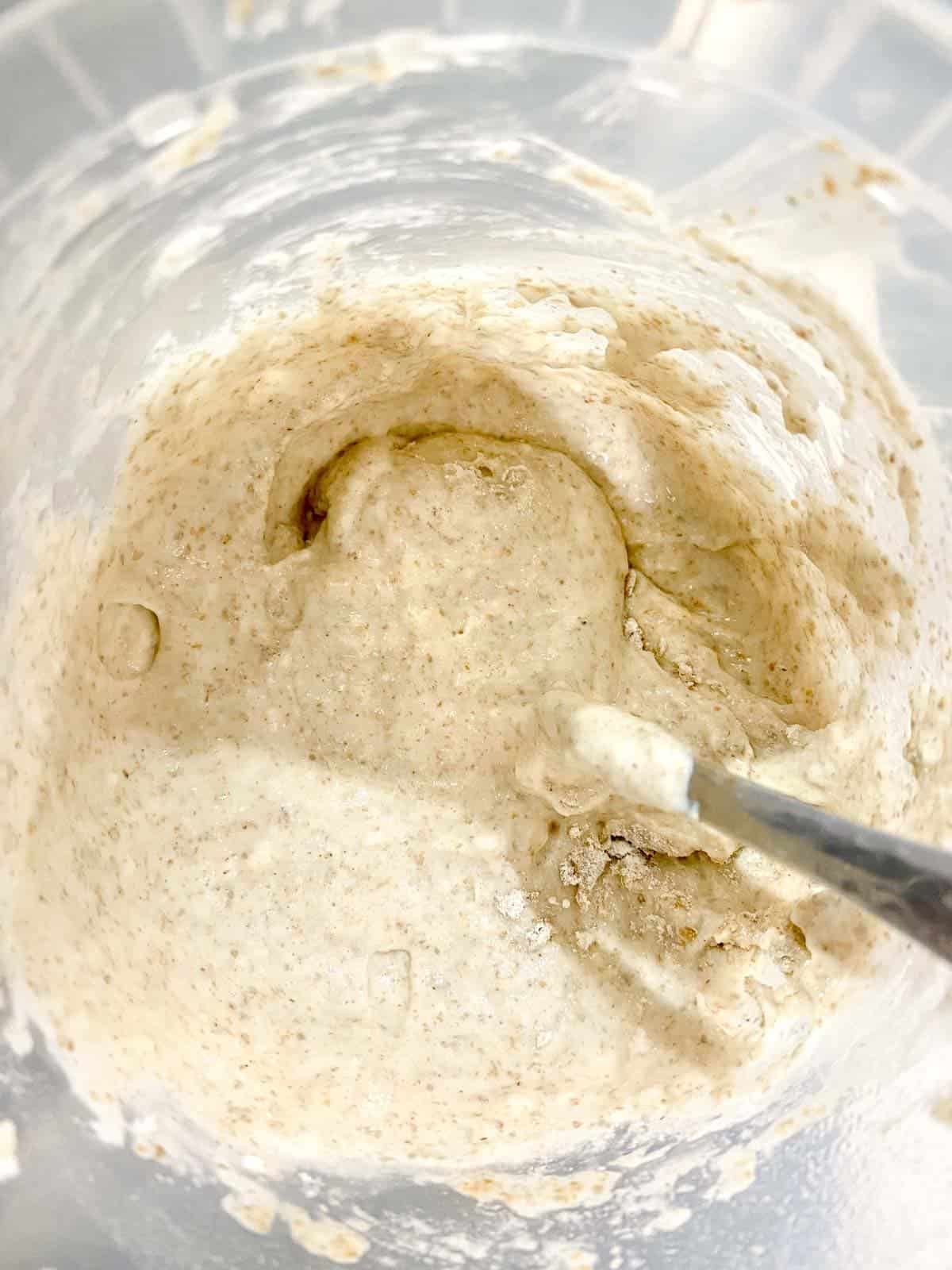
Day 3 thru 7:
On days 3 through 7 you will feed your starter twice a day. I try to feed mine when I wake up and then in the evening.
- Discard 100 grams of the starter and then feed the remaining starter.
- 100 grams of water (1/2 cup). Stir the water into the mixture.
- 100 grams of all-purpose flour (2/3 cup). Stir this mixture together until it forms a thick paste.
- Loosely cover this mixture and set it out at room temperature overnight.
Around day 4 you can start using your sourdough discards to make sourdough discard recipes. Keep in mind the starter isn’t completely mature, but for baked goods that don’t need a ton of leavening, the immature starter is sufficient to give leavening and sourdough flavor.
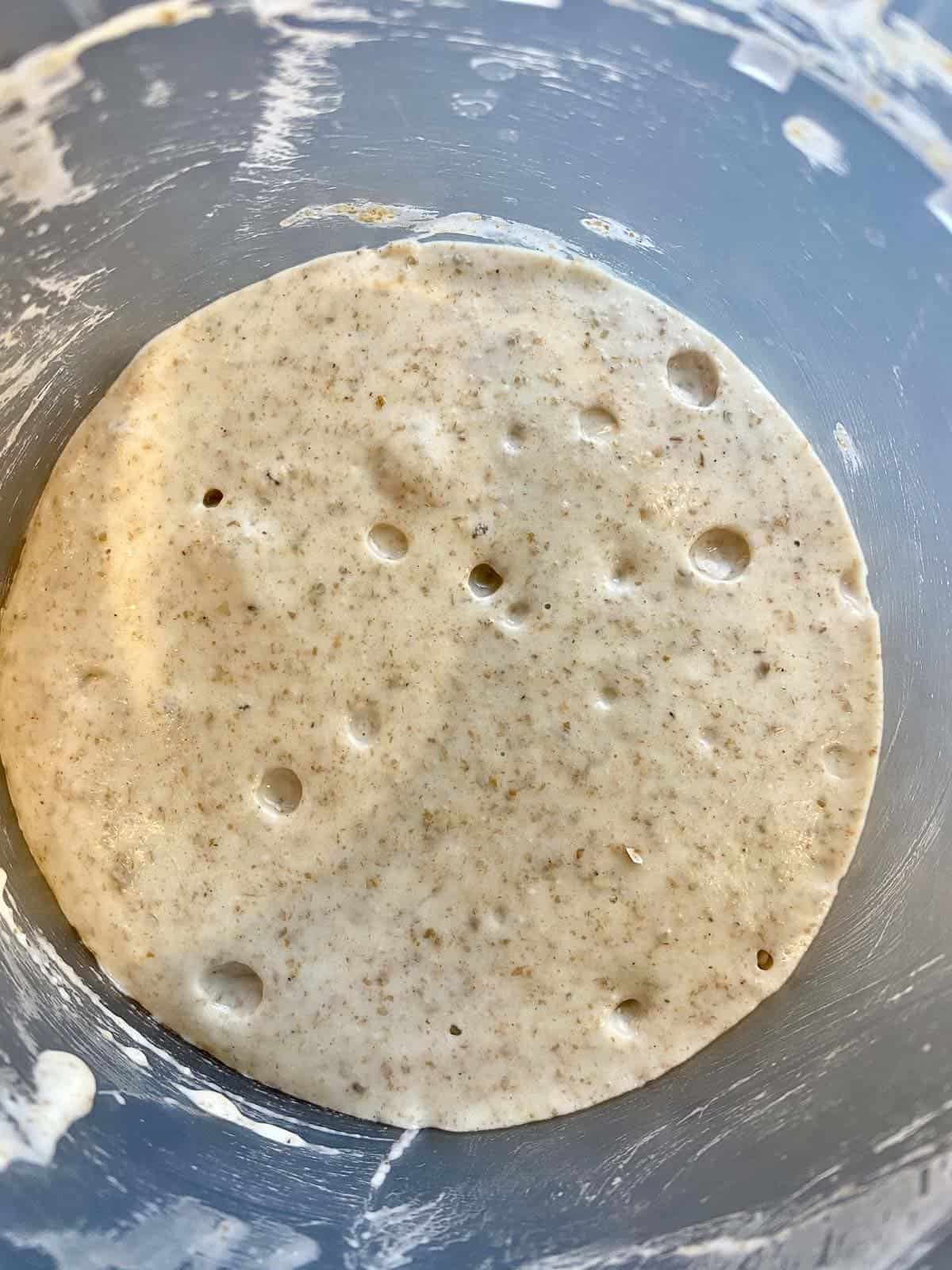
FAQs and Tips
What is Sourdough Starter?
A sourdough starter, in short, is fermented flour and water. When you make a sourdough starter, you are essentially capturing and feeding wild yeast that is present in your biosphere. Weird right?
Yeast is all around us. When you make a starter you are simply providing the yeast a favorable substance to grow on or in. The yeast eats up the nutrients in the flour and releases carbon dioxide and ethanol, which forms the bubbles in your starter.
Sourdough starter is used in place of packaged active dry yeast in bread recipes.
How to Store a Sourdough Starter
Once the sourdough starter has matured, you can store it at room temperature or in the fridge. This will depend on how often you are baking homemade bread. Keeping your starter at room temperature is perfectly manageable if you like to bake daily. However, if you are a weekend baker, you can store the starter in the fridge to slow down the fermentation process.
At room temperature
If you store your sourdough starter at room temperature, you will need to feed the starter daily to keep it alive and to keep the active yeast thriving. this means that you will have a daily sourdough discard. If you feel bad about throwing out this discard daily, you can do a few things.
- Start making sourdough discard recipes. These recipes are usually less time-consuming than baking a loaf of sourdough bread.
- Use the discard to start a second starter that you can gift to a friend. All of your home bakers friends will appreciate a healthy, well-cultured sourdough starter.
In the fridge
A mature starter can be stored in the refrigerator. You should feed your starter once a week to keep it alive and healthy.
To feed a starter that has been stored in the fridge, start by taking it out of the fridge and bringing it to room temperature overnight. In the morning, stir the starter well. It may have a small amount of brown liquid on the top. This is normal. Stir the starter so the mixture is homogenous, and discard half of the starter.
If you are traveling, storing the starter in the fridge is the best way to slow down the fermentation and keep it alive so you can use it when you are ready. In the past, I have often left my starter in the fridge for up to a month and was able to revive it with a few feedings.
How to Feed Sourdough Starter
Regular feeding of the starter is crucial to keep the yeast alive. The basic formula for feeding your sourdough starter is to remove half of the starter and replace it with 100 grams of water and 100 grams of new flour.
The best flour to use for feeding is all-purpose flour. All-purpose flour is relatively inexpensive and readily available.
When to cook with a sourdough starter?
A healthy starter will start to bubble and gain volume when you feed it.
If the starter is active and healthy it will start to bubble as soon as you feed it. Four hours after you feed the starter, it should approximately double in size. This is its peak.
After the peak, the starter will start to lose volume.
How To Start A Levain
The best practice for starting a loaf of sourdough bread is to start the levain in the morning. The levain is made from a portion of your sourdough starter to which you’ll add water and new flour.
The difference between the standard feeding of your starter and building a levain is that you will add bread flour and whole wheat flour to the portion of the starter.
It’s also important to use warm water,74-76°F (23-24°C), to encourage the activation of fermentation.
You will start this process in the morning and allow it to ferment for 4 to 6 hours before adding the remaining flour and water to your bread.
When your starter has been in the fridge
If your starter has been stored in the fridge. Take the starter out of the fridge the day before or even two days before you will be baking. Allow it to come to room temperature, give it a good stir and then feed it once or twice daily until you are ready to bake.
Remember a good gauge to use is that your starter is ready to use if, after feeding, it doubles in size within four hours. If it’s not growing, then continue feeding it for a few days until you start to get healthy activation in the yeast.
Let it ferment overnight. In the morning, you can start building your levain.
Sourdough Bread Recipe with Starter
There are tons of bread recipes on the internet. I’m a true fan of Maurizio Leo of The Perfect Loaf. All of his recipes are divine. He specializes in creating artisan bread in his home kitchen. His results are inspirational. During the pandemic, when we were all in the kitchen making loaves of bread to comfort our souls I tried dozens of Maurizio’s recipes, and every one of them came out perfect!
Start with his beginner loaf of bread, and then work through all the recipes.
- Beginner’s Sourdough Bread – The Perfect Loaf
Sourdough Starter Discard Recipes
If you feel it’s wasteful to toss out the starter portion when it’s time to feed your starter, you might want to check out a few of these sourdough starter recipes.
- Sourdough Crackers – Love and Olive Oil
- Pizza Dough made with sourdough starter discard – Sourdough Home
- Sourdough Pretzels – King Arthur
- Sourdough Pancakes – King Arthur
More Bread Recipes to Love
Sourdough Starter
Equipment
- glass jar
Ingredients
- 100 grams filtered water
- 100 grams rye flour, or whole wheat flour
Daily Feeding
- 100 grams filtered water
- 100 grams white flour, you can also use a mixture of white and wheat flours
Instructions
Start the Sourdough Starter
- Mix the water and the flour together in a clean glass jar.100 grams filtered water, 100 grams rye flour
- Loosely cover the jar and set it out at room temperature overnight.
Day 2
- Discard 100 grams of the starter mixture.
- Add 100 grams of filtered water (1/2 cup). Stir the water into the mixture.100 grams filtered water
- Add 100 grams of all-purpose flour (2/3 cup). Stir this mixture together until it forms a thick paste.100 grams white flour
- Loosely cover this mixture and set it out at room temperature overnight.
Day 3 thru 7
- On days 3 through 7 you will feed your starter twice a day. I try to feed my starter when I wake up and then in the evening.
- Discard 100 grams of the starter and then feed the remaining starter.
- Add 100 grams of water (1/2 cup). Stir the water into the mixture.100 grams filtered water
- Add 100 grams of all-purpose flour (2/3 cup). Stir this mixture together until it forms a thick paste.100 grams rye flour
- Loosely cover this mixture and set it out at room temperature overnight.
Laura’s Tips + Notes
- Remove two-thirds of the current starter. (leave about 50 to 60 grams of starter) I usually just eye it here.
- Add 100 grams of water and stir.
- Add 100 grams of flour and stir to combine.
YOUR OWN NOTES
Sign In to add your own private notes

